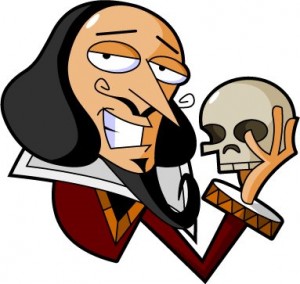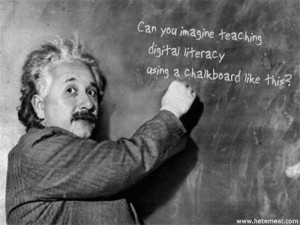“Dalliance with English Lite ? Or Novel Ways of Dealing with New Texts and Genres”
Reading the Opinion Piece by Christopher Bantick in The Australian on the weekend, I was intrigued to read how strongly opinionated a senior high school teacher could be on the use of social media in the classroom.
Bantick says that “As a practising senior literature teacher, it was with a sense of dismay that I read of the “engaging” English curriculum materials being produced by the Australian Association for the Teaching of English and the Primary Teachers Association. By “engaging”, the AATE and PTA mean superficial and undemanding gimmickry masquerading as a substantial curriculum. The emphasis is on digital and visual texts, Facebook, blogs and websites.This is a craven abrogation of the responsibility to teach significant and demanding literature.”
It sounds like Bantick has a real fear of new media in the classroom and in the community … I wonder whether teachers were equally as skeptical when television/ DVD’s and more recently You Tube arrived on the scene? Good to see that ETAQ responded as follows.
http://www.etaq.org.au/?p=1187#more-1187
Bantick argues that engaging with authors and working with multi-modal streams of media and discussion forums is not “working with English”. He suggests that this should be called “English Lite” because there is too much “meta-language twaddle” and no deep satisfaction or rigorous understanding of literature. He even argues that “To deny Australian children access to great literature and some knowledge of the Western canon is culpable behaviour.”

Today, there are increased cognitive demands on our students to interpret, analyse and evaluate the inter-textuality of communication platforms that include various combinations of print, speech, sounds, images, music, movement,and animation.
As the notion of literacy and genre itself increases due to the expansion of many differing means of publication and communication, teachers and students are faced with new products to critically deconstruct and at the same time, models that can be used as prototypes to re-create. Following the Bloom’s Taxonomy structure, the highest form of thinking is to create and with the increasing power of keyboard, digital authoring capabilities and the opportunities to publish on blogs or via Youtube, the student is presented with novel ways of expressing their understanding of texts and engaging with English in a functional and most productive way. In response to Christopher Bantick, it surely would be culpable of teachers in the 21st century, not to facilitate an environment in which students have the opportunities to engage in rich conversations (digital communities or directly with authors), peer-to-peer collaboration and creation of textual products based on new and traditional genres.
Teaching Take Away #1 – We recently worked on with a unit on Horror. I posed 5 questions via an online forum over the period of a week on the genre of horror, gothic fiction authors, the development of fairy tales and horror as a creative writing stimulus. The discussions in class and online were intense and rigorous. Thanks to our Online Learning Management System we were able to take full advantage of ongoing literature debates.

